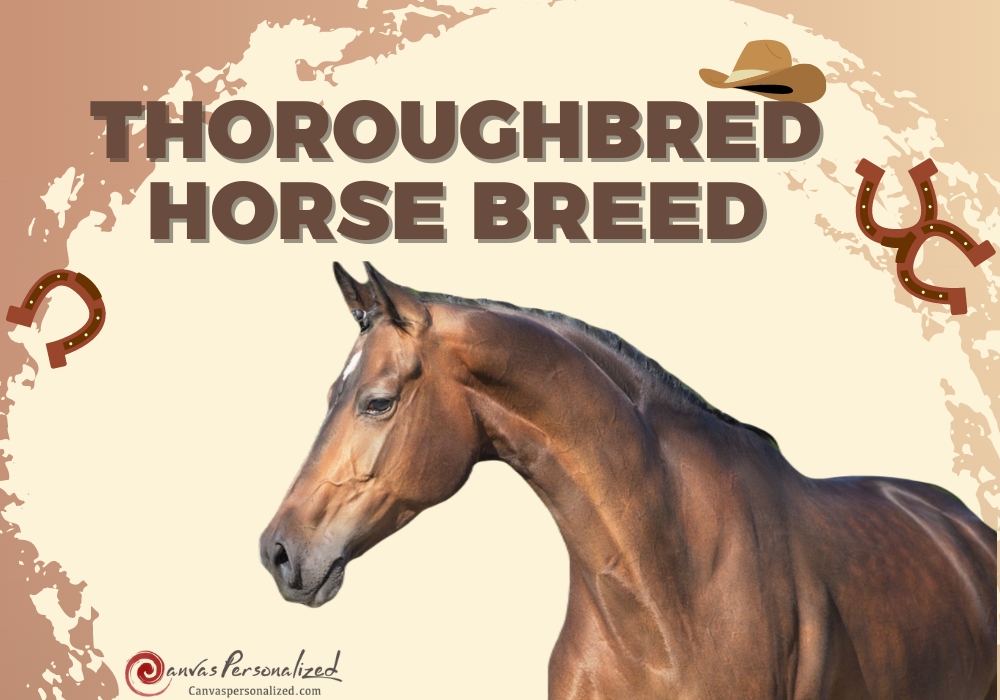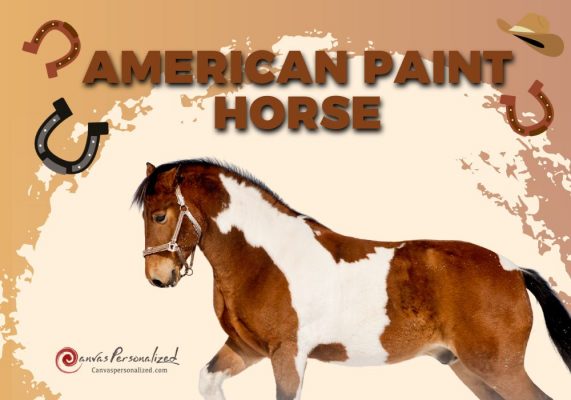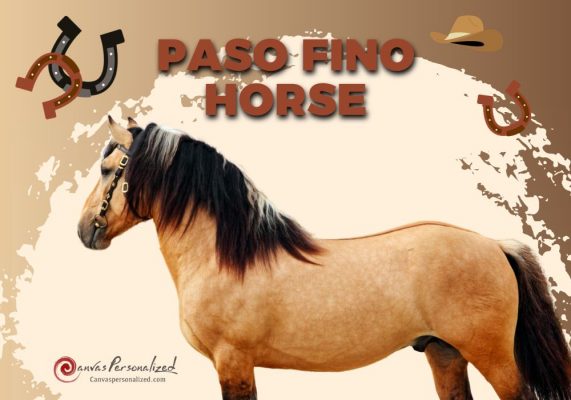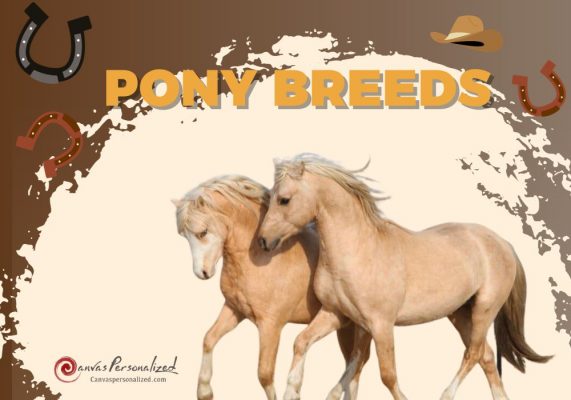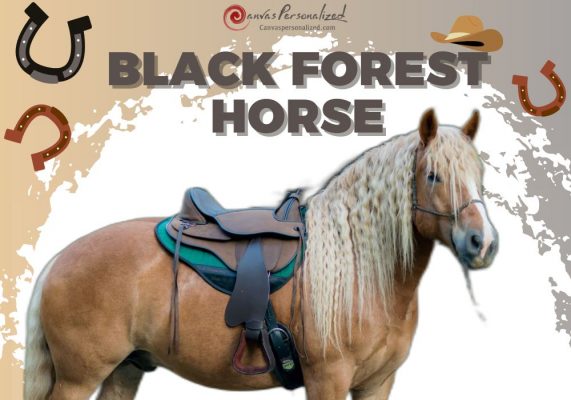Due to its widespread use in horse racing, the thoroughbred is a familiar sight to most. But this thoroughbred horse breed can do more than just race. Many are also prized as show animals and used as riding horses after they retire from racing. Find out more interesting things about this warm-blooded horse with Canvas Personalized Blog!
Thoroughbred Horse Facts Overview
- Weight: 1,000 to 1,200 pounds
- Height: 15 hands (60 inches) to 17 hands (68 inches)
- Best for: horse racing, show jumping, dressage, and more
- Lifespan: 25 to 35 years
1. The Background Of Thoroughbred Horses
During the 17th and 18th centuries, when horse racing was at its height in England, the first thoroughbreds were born. Three stallions of Middle Eastern origin—a Barb, a Turkoman, and an Arab—were brought to Britain and mated with local mares to produce the first Thoroughbreds. Byerly Turk, Darley Arabian, and Godolphin Arabian were the names of these three foundation sires (named for their owners, a previously common practice). A powerful, fast, and durable horse breed was produced via careful selective breeding.
It wasn’t until 1730 that the first thoroughbred reached the American colonies. Horse racing had become a popular sport in the United States, with Kentucky and Tennessee emerging as major hubs for thoroughbred breeding and racing in the 1800s. The thoroughbred also affected the American quarter horse, the standardbred, and the Morgan.
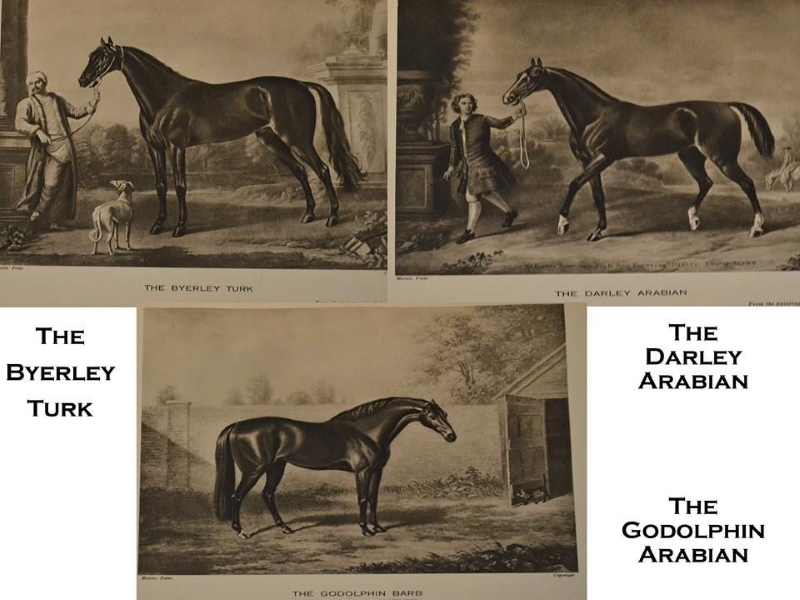
Today, the Thoroughbred still works on racing and participates in various other horse sports. Around the world, there are a lot of Thoroughbred horses. The thoroughbreds of the United States and Canada are registered with the Jockey Club.
2. Thoroughbred Horses Appearance
This horse breed was made for racing, so they have a trim build, long legs, and a sculpted head, contributing to their speed (about 40 mph). Their strong hind legs provide them a powerful boost when running. Despite their big and robust, these horses are surprisingly graceful and agile in motion.
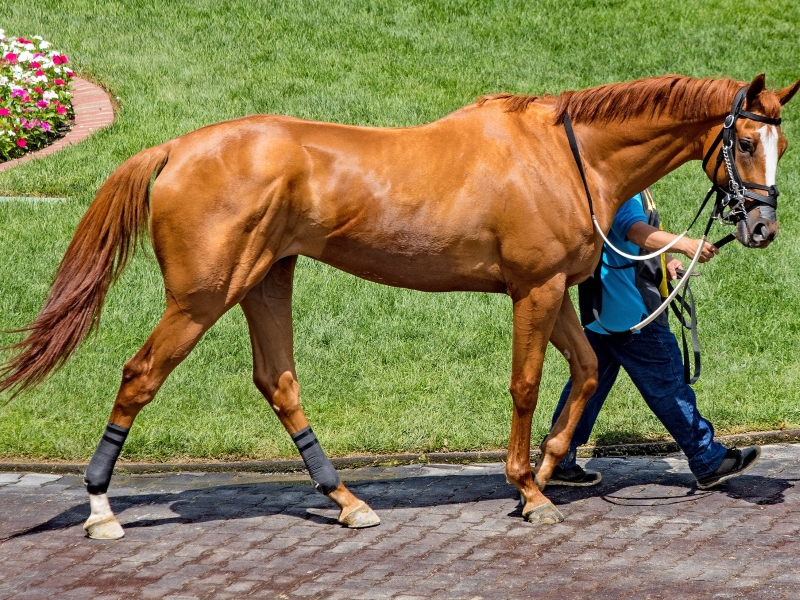
Thoroughbreds can have any solid color of horse coat. The most common colors are bay, brown, chestnut, black, and gray. Coat patterns with more than one color are often not recognized by breed registries. But white markings on the face and legs, like blazes or stockings, are allowed, even though most thoroughbreds are plain and have few or no markings.
3. Diet and Nutrition
High-quality grass, hay, grains, and certain fruits and vegetables are staples of a thoroughbred horse’s diet. It is possible that you need to take a vitamin and mineral supplement. The Thoroughbred, bred for speed and utilized in racing, has a rapid metabolic rate. Therefore, they usually need more food than other horse breeds to keep up with their -energy.
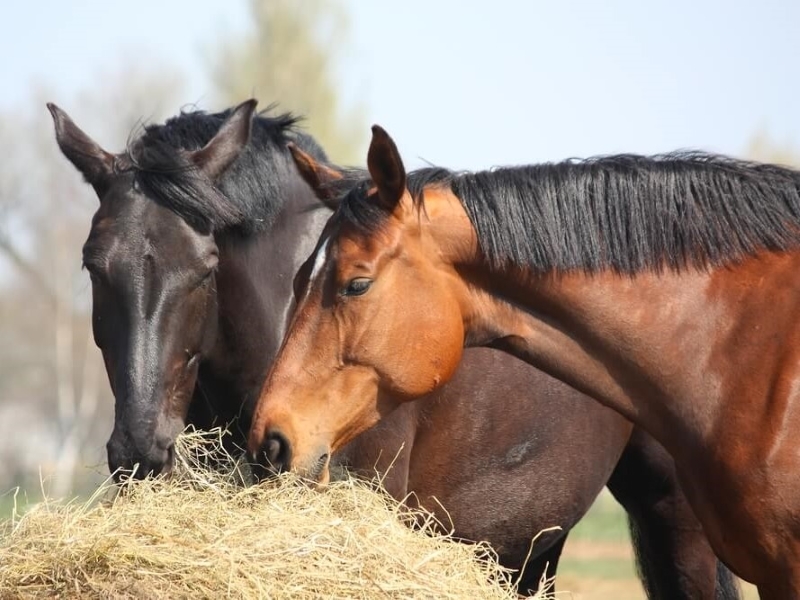
4. Thoroughbred Horse Breed Grooming
Standard horse care routines are fine for thoroughbred horses. They must be brushed at least twice a week, and their hooves should be checked and cleaned daily to detect injuries and infections. The skin of a thoroughbred is more delicate than that of most other horses, thus care must be used during grooming.
Grooming, especially if you touch any tender regions, might be more irritating to a thoroughbred. You should take your time and encourage the horse’s excellent conduct by giving it goodies or praising it. Attempt to find gentle grooming implements, such as a brush made of natural bristles rather than nylon.

5. General Temperament and Behavior of Thoroughbred Horses
Thoroughbred horses are known for their high intelligence, boundless energy, and great work ethic. They can also be brave and full of spirit, which makes them better for an experienced rider than a beginner. Retraining a horse used for racing for a different purpose, such as casual riding, can be extremely challenging. These horses have been trained to compete, so they are easily startled by anything that sounds like a gunshot. Also, most former racehorses have only basic behavior training.
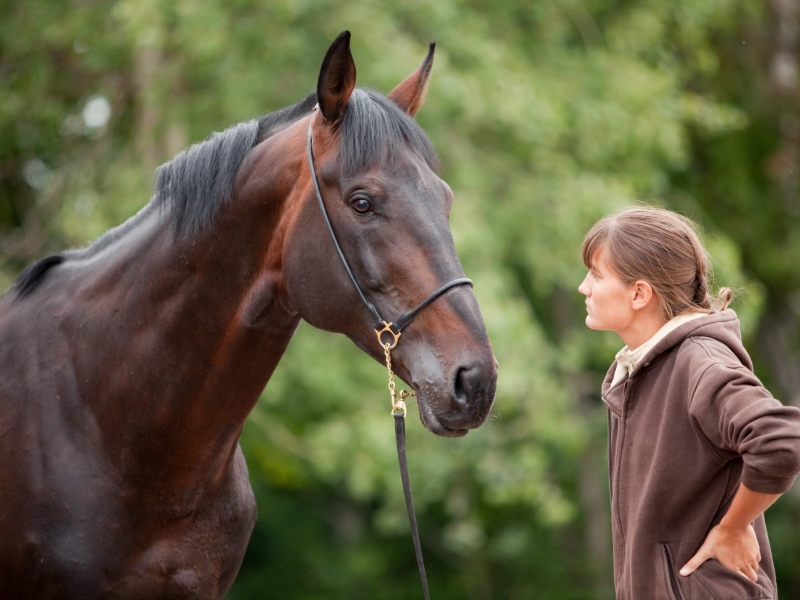
6. Common Thoroughbred Breeds Health Issues
Since Thoroughbreds are used primarily as racehorses, they are more vulnerable to equine health problems. Thoroughbreds have a lot of accidents on the racetrack because they are pushed to their limits. Even if they avoid accidents, many Thoroughbred racing horses will suffer from stress fractures or bone chips over their lifetimes. Thoroughbred horses are more likely to develop health problems than other horse breeds, such as pulmonary hemorrhage, because of inbreeding and intensive exercise. Some Thoroughbred horses have abnormally small hearts, and this, together with a variable hooves-to-body size ratio, can cause lameness.
7. You Might Ask, “Why to Pick a Thoroughbred?”
Racing is the most apparent use for a Thoroughbred, and the breed was developed specifically for that purpose. They are lightning-quick and have a willing-to-please personality that makes them simple to teach.
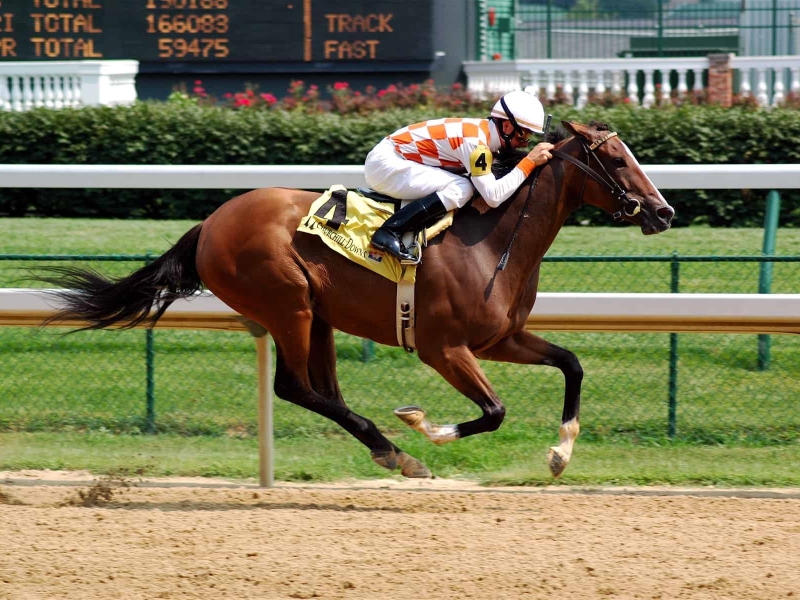
Thoroughbreds are not only used for racing but also widely used for other equestrian sports, including dressage and show jumping. Many organizations are dedicated to finding new homes for retired racehorses like Thoroughbreds, who may be ideal for recreational riding and companionship.
Is A Thoroughbred Horse Right For You?
Being bred for speed and strength, Thoroughbreds aren’t always the best horses for beginners. But thoroughbreds offer the smoothest and most powerful ride possible for more experienced riders who can harness the breed’s energy. Because of their high activity levels, they are great for riders who want to compete in equestrian competitions.
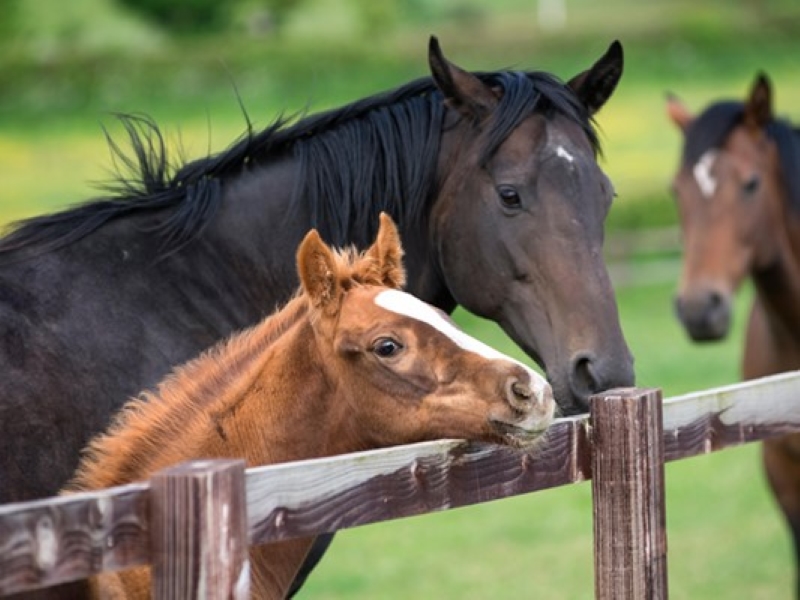
Buying or Adopting a Thoroughbred Horse
Due to their popularity, it’s not hard to find or adopt a thoroughbred anywhere in the world. They range in price widely because of factors including the horse’s age, lineage, training, and health. Champion thoroughbred racehorses may cost over $100,000, while thoroughbreds for general riding or retired racehorses can be purchased for $1,000 to $10,000.
| Name | Website |
| New Vocations Racehorse Adoption Program | https://www.newvocations.org/ |
| Thoroughbred Adoption Network | https://www.goodhorse.org/ |
| CANTER USA | https://canterusa.org/ |
| Thoroughbred Heritage | http://www.tbheritage.com/ |
| Bits & Bytes Farm | https://www.bitsandbytesfarm.com/ |
| Maker’s Mark Secretariat Center | https://www.secretariatcenter.org/ |
| ReRun Thoroughbred Adoption | https://www.rerunottb.com/ |
| Second Stride | https://secondstride.org/ |
>>Further reading:
Canvas Personalized hopes the information above will be helpful to you. Let us know if you chose this thoroughbred horse breed as a companion pet. Find other perfect pets for your family or friends by reading our previous articles!


